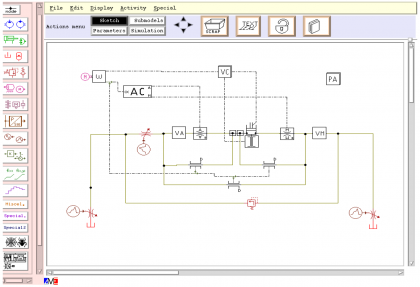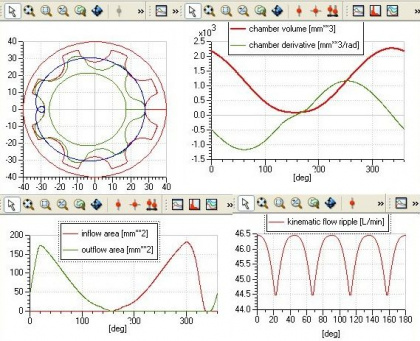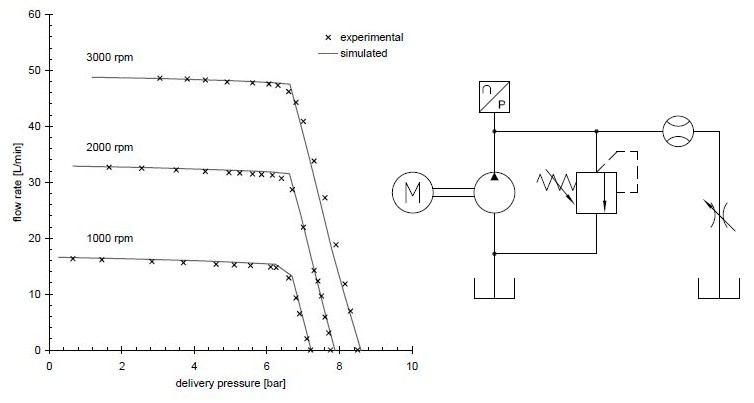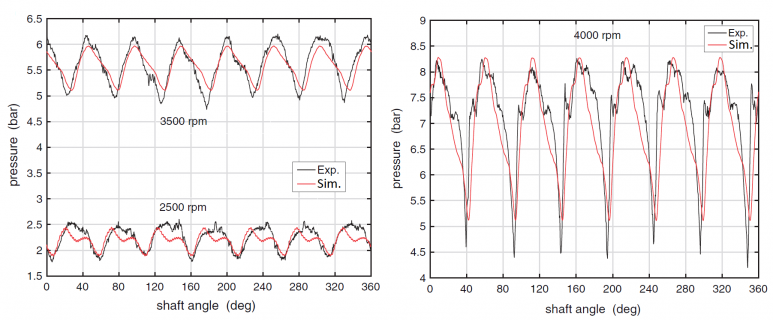-
 Publications
Publications
-
 Research activities
Research activities
-
 Hybrid mobile hydraulics for excavators
Hybrid mobile hydraulics for excavators
-
 Lubricating Systems with Rotating Shafts
Lubricating Systems with Rotating Shafts
-
 0D models of axial piston pumps/motors
0D models of axial piston pumps/motors
-
 CFD studies on conical poppet valves
CFD studies on conical poppet valves
-
 CFD analysis of gerotor pumps
CFD analysis of gerotor pumps
-
 Lumped parameter models of crescent pumps
Lumped parameter models of crescent pumps
-
 Lumped parameter models of vane pumps
Lumped parameter models of vane pumps
-
 Lumped parameter models of gerotor pumps
Lumped parameter models of gerotor pumps
-
 Coupled simulation of telehandler hydraulics
Coupled simulation of telehandler hydraulics
-
 Modelling of brake booster vacuum pumps
Modelling of brake booster vacuum pumps
-
 Absorbed energy in ICE lubricating pumps
Absorbed energy in ICE lubricating pumps
-
 Multi-body simulation of axial piston pumps
Multi-body simulation of axial piston pumps
-
 Development of variable flow lubricating pumps
Development of variable flow lubricating pumps
-
 Optimization of ICE lubrication gerotor pumps
Optimization of ICE lubrication gerotor pumps
-
-
 Research projects
Research projects
Lumped parameter models of gerotor pumps (1997-1999, 2016-2017)
In the late nineties, we have developed the very first lumped parameter model for the simulation of gerotor pumps. The model was built in one of the first releases of AMESim (currently Simcenter Amesim) with an extensive use of the tool Ameset for creating new customized libraries of submodels. A major innovation was the use of the vector approach for the simulation of the variable volume chambers of the pump. The idea was to create a library of hydraulic components (volumes, laminar and turbulent restrictors) where the number of elements, representing the number of variable volume chambers of the pump, is set simply by a parameter. The advantage of this approach is that to change the number of chambers it is not necessary to modify the sketch of the model. This approach has been maintained for all other types of pumps studied over the years. The model of the gerotor pump, continuously improved thanks to the possibility to perform experimental tests, can be used for the evaluation of the real flow rate and of the pressure ripple, starting from the geometry of the gears, of the port plate and of the clearances. In particular, the flow area can be calculated with a numerical procedure starting from the profile of the port plate supplied as X-Y lookup table.
In figure 1 an historical view of the model built with the release 1.5 of Amesim running on a Sun Sparkstation 20 with a 50 MHz processor and Solaris operating system.
 Figure 1
Figure 1
Figure 2 shows some quantities evaluated for a gerotor pump starting from the parameters of the gears and of the porting plate. They include, among others, gears profiles and their line of contacts, chamber volume and its derivative, chamber inflow and outflow flow areas, kinematic (ideal) flow ripple.
 Figure 2
Figure 2
Besides time history graphs, steady-state characteristics can be also obtained by means of an automated procedure. Figure 3 reports the typical flow-pressure characteristic of a gerotor pump with a pressure relief valve.
 Figure 3
Figure 3
Recently, the model for lubricating pumps has been improved in order to consider also the deformation of the cover plate calculated by means of FEM analyses. In figure 4 a comparison between the experimental and simulated pressure ripple is shown for different angular speeds.
 Figure 4
Figure 4
More analyses and details are available in:
MANCO’ S, NERVEGNA N, RUNDO M et al. 1998: Gerotor Lubricating Oil Pump for IC Engines
MANCO’ S, NERVEGNA N, RUNDO M, 2002: A contribution to the design of hydraulic lube pumps
ALTARE G, RUNDO M, 2017: Advances in simulation of gerotor pumps: An integrated approach
